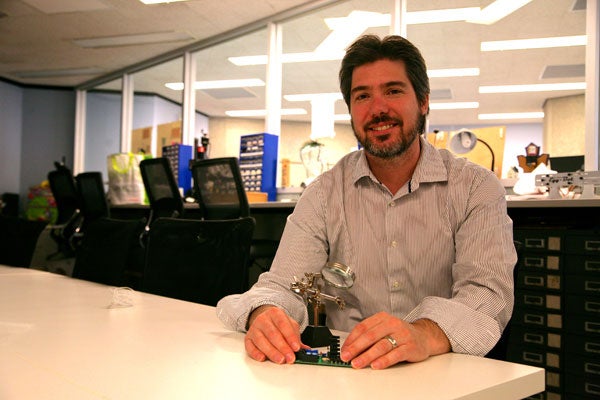
Looking into the future with Matt Ratto
Published: May 28, 2013
University of Toronto Professor Matt Ratto first realized the connection between technology and society when he was young. Really young. As a precocious 11-year-old in California, he started his own software company developing software for the Commodore PET and Apple II computers.
As Ratto got older, his interests evolved. So did computer technology. As Ratto points out, in his lifetime computers have gone from mainframes to personal computers to smart phones to embedded devices in everything from microwaves to automobiles. And with the advent of devices like fitness trackers and digitally-enabled physical objects, the Internet is poised to become even more pervasive. The Faculty of Information's Ratto terms this phenomenon “the Internet of things” and, along with his colleagues, the one-time software entrepreneur hopes to make some sense of this brave new digital world.
“We used to go to the Internet through our screens but, increasingly, we live within cyberspace,” says Ratto in his workspace at the Faculty of Information on U of T’s downtown campus.
Ratto is the director of two U of T labs. The Semaphore Lab is devoted to examining the effects of technology on society. Along with colleagues Professor Sara Grimes and Professor Rhonda McEwen, Ratto has created what he calls “a space that bridges the social and the technical sciences so that projects engage in social science research and engineering practice.”
Semaphore also shares space with Ratto’s other interest, the Critical Making lab. Since 2009, it’s been the go-to place for people to engage with emergent digital technologies in a way that combines critical reflection and physical making, including 3D printers, circuit board mills and physical computing tools and systems.
The cross-disciplinary research cluster has attracted scholars and researchers from a range of backgrounds such as computer science, education, design and engineering. The labs were founded to give everyone – not just a small group of Technorati – the chance to grapple with pervasive computer environments.
One of Ratto’s proudest achievements is an ongoing workshop series he supports, created by local artist and curator Nina Czegledy and Adriana Ieraci, CEO of design firm, ConveyorBuilt. These workshops bring together diverse stakeholders including students, prosthetics users, designers and medical people to explore emergent technologies and the human body. Participants are encouraged to build prosthetics that enhance human capabilities.
The results? Prosthetic hands with built-in light sensors, models with magnets in the fingertips, and wearable devices that detect obstacles in front of them. But the goal of these workshops is not entirely technological. The events include historical and conceptual details intended to open up and extend discussion and dialogue regarding the nature of the body, technological extension and larger social ramifications.
Ratto’s interest in the social aspects of technology evolved from popular books in the 1980s and early-1990s that painted radically different views about the rapidly expanding Internet.
“It was either going to destroy the world or save it,” says Ratto.
Exploring the way the digital and the physical are coming together is important, Ratto says. In the past, for example, people were inserted into computational spaces (think 1990s virtual reality glasses or the Second Life website). But now computation is moving into physical space as well, with technologies such as 3D printing and Google Glass.
“We need to explore the ramifications of these shifts, better understand how they are transforming human experience, and make sure that they are being designed and implemented in inclusive ways,” says Ratto.
With his colleagues at the Semaphore and Critical Making labs, he’s promising to do just that.

